trimattrdg
Member
- Messages
- 32
- Location
- HARROGATE
I moved into a 1920's Semi Detached property with cavity wall 2.5 years ago. At the time one of the positives for me was that it had been renovated which included all new plaster and render etc. I am learning about how to treat older properties and in hindsight some of this things done in renovation were not great.
Since moving in I have noticed the following:
- Salts near skirting mainly on internal solid brick walls (not particularly localised) a couple of these spots the plaster has gone so soft you can poke through - none of them ever feel wet to touch and most spots are still firm (some with minimal/no change over 2 years)
-Can smell musty during warmer temps with high humidity but not in winter/colder temps even when rain is heavy.
- I have opened up behind some plaster that's in poor condition and there is just loads of dabs and plaster is damp and slightly mouldy behind and in some cases 7cm gap between plaster and solid wall with random bits of plaster board to bulk it out, tons of adhesive along the skirting too .Bricks I have seen appear dry visually at least but not taken the skirting of yet anywhere down to floor level
- I have had drains checked and appear good conditions and not running under old house, ground levels are reasonable plumbing is all new plastic and have checked water meter (interestingly one of the biggest salt spots is where the old lead supply previously came in at centre of house).
-Roof is new and no signs of leaking in loft , all gutters new and running clear and no blocked drains around permitter
The entire part of old house downstairs has gypsum plasterboard with non-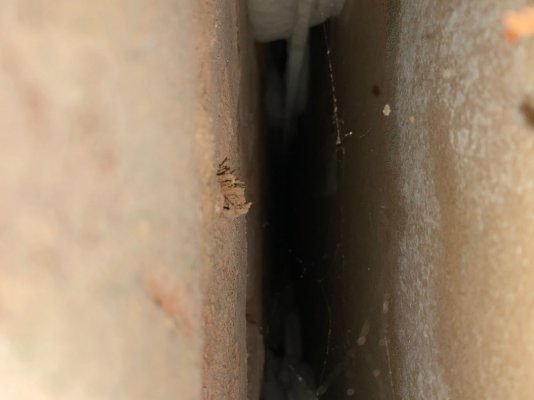 breathable paints. The local area is notorious for high water table and occasional water in subfloor during periods of heavy rain.
breathable paints. The local area is notorious for high water table and occasional water in subfloor during periods of heavy rain.
Compounding this the is an extension to the rear (concrete floor and garage to side with a lower concrete floor) - thankfully there is piping x2 to vent through to subfloor which seems effective.
Since moving in the main thing I have done is improve subfloor ventilation significantly (probably more then double) by unblocking many blocked ones (including the new ones at rear blocked by paving already and installing ugly plastic vents at front replacing the clay ones .
I really want to get rid of the gypsum plasterboard and replace with lime alternatives but I'm aware this may not be a magic fix! I'm also aware there may be some surprises under the plaster board (although the bits I have inspected so far are bare brick but I imagine I could find old lime plaster etc). All logic tells me this is the best thing I can do for the property but at the same don't want to go to the effort of all this work and still have same problems with salts etc.
My plan current is to break it down to focus on the different areas ( living room, hallway, utility room and downstairs loo) -
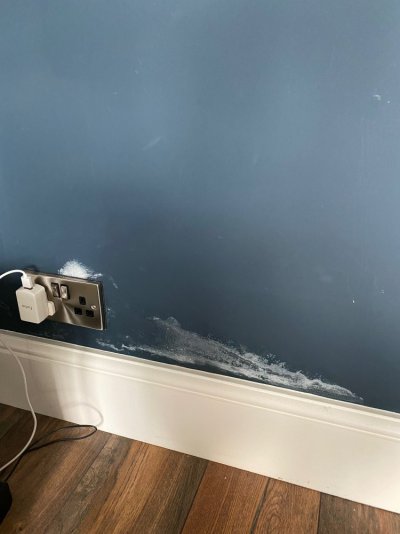
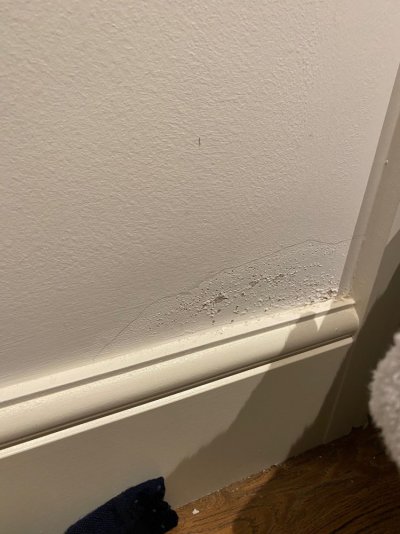
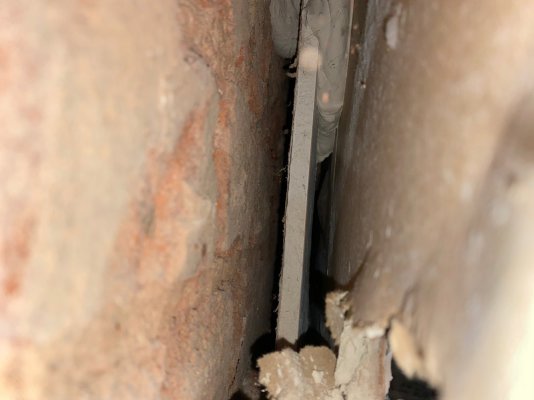
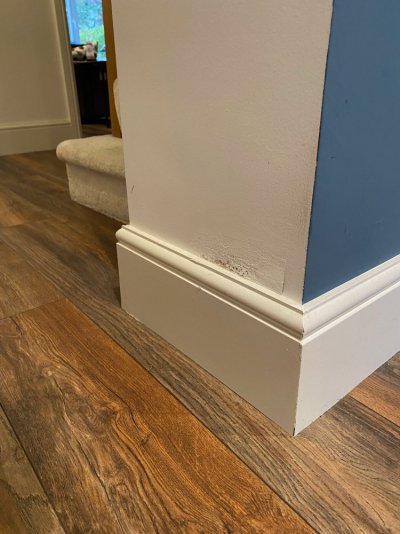
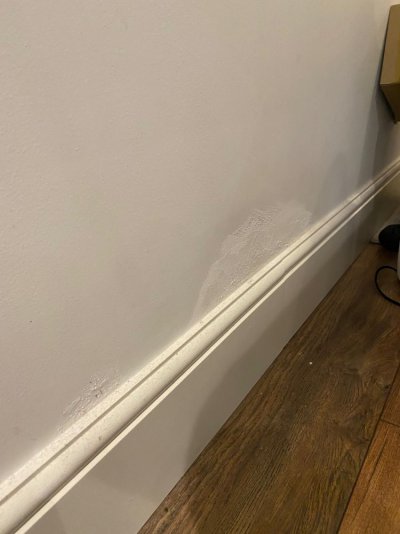
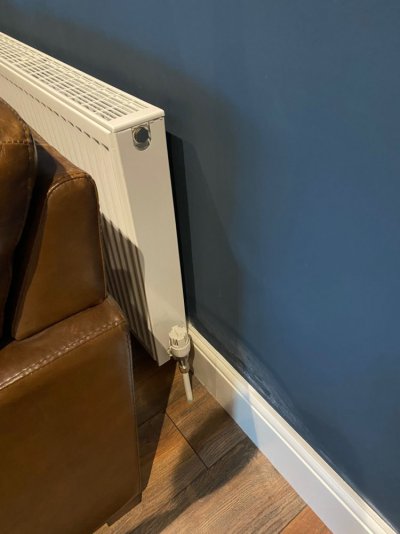
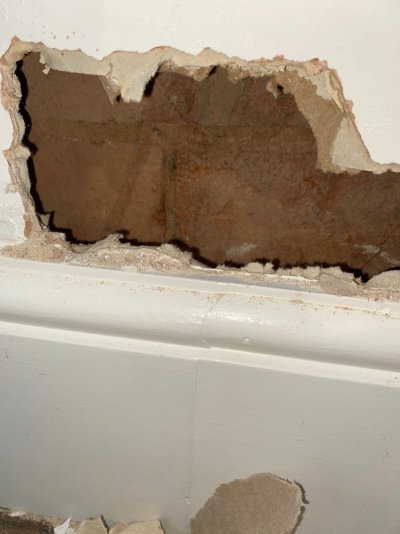
Since moving in I have noticed the following:
- Salts near skirting mainly on internal solid brick walls (not particularly localised) a couple of these spots the plaster has gone so soft you can poke through - none of them ever feel wet to touch and most spots are still firm (some with minimal/no change over 2 years)
-Can smell musty during warmer temps with high humidity but not in winter/colder temps even when rain is heavy.
- I have opened up behind some plaster that's in poor condition and there is just loads of dabs and plaster is damp and slightly mouldy behind and in some cases 7cm gap between plaster and solid wall with random bits of plaster board to bulk it out, tons of adhesive along the skirting too .Bricks I have seen appear dry visually at least but not taken the skirting of yet anywhere down to floor level
- I have had drains checked and appear good conditions and not running under old house, ground levels are reasonable plumbing is all new plastic and have checked water meter (interestingly one of the biggest salt spots is where the old lead supply previously came in at centre of house).
-Roof is new and no signs of leaking in loft , all gutters new and running clear and no blocked drains around permitter
The entire part of old house downstairs has gypsum plasterboard with non-
 breathable paints. The local area is notorious for high water table and occasional water in subfloor during periods of heavy rain.
breathable paints. The local area is notorious for high water table and occasional water in subfloor during periods of heavy rain.Compounding this the is an extension to the rear (concrete floor and garage to side with a lower concrete floor) - thankfully there is piping x2 to vent through to subfloor which seems effective.
Since moving in the main thing I have done is improve subfloor ventilation significantly (probably more then double) by unblocking many blocked ones (including the new ones at rear blocked by paving already and installing ugly plastic vents at front replacing the clay ones .
I really want to get rid of the gypsum plasterboard and replace with lime alternatives but I'm aware this may not be a magic fix! I'm also aware there may be some surprises under the plaster board (although the bits I have inspected so far are bare brick but I imagine I could find old lime plaster etc). All logic tells me this is the best thing I can do for the property but at the same don't want to go to the effort of all this work and still have same problems with salts etc.
My plan current is to break it down to focus on the different areas ( living room, hallway, utility room and downstairs loo) -
- Back to brick
- Hemp Lime on the party wall in living room which appears dry (no salts) to try and take advantage of density of material.
- Wood wool board with lime plaster on most other walls downstairs in old part of house (mainly wood wool because I think I am less likely to have problems with salts and also provide some insulating benefit - is this ok straight on the wall ?







